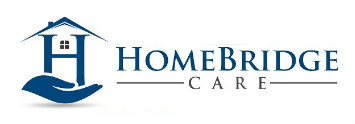Falls are experienced all too frequently by older adults. In fact, they’re on the rise. According to the Centers for Disease Control (CDC), by 2030, we can expect such falls to rise from 36 million to 52 million. Unfortunately, most families aren’t aware of the seriousness of the situation or its effects.

Those who haven’t experienced a fall don’t realize the devastating impact one can have on an older person. Depending on the circumstances, a fall can lead to increased isolation, anxiety, rapid decline and even death. However, it’s common for people to include falls in a category of issues that come naturally with age—stiffness, poor eyesight, decreased bone density. “People get old, and they fall. It’s just what happens.”
That’s not true.
Falls are preventable. The National Council on Aging (NOCA) has created Falls Prevention Awareness Week to spread this important messaging. During the first week of the fall season, September 20th to the 24th, there will be a nationwide effort to raise fall prevention awareness.
As a home care agency, we too want to spotlight the seriousness of falls and help change the conversation surrounding them. Helping older adults understand that they can be proactive in managing their risk and reducing their chances is step one.
We’re committed to empowering older adults and their families through education. First, we start by providing a free guide that reviews risk factors and solutions to consider. We discuss the leading reasons why falls occur in the first place including:
- Medications | We always say that you can’t talk about falls without talking about medications. The CDC shares that individuals on eight or more medications are more likely to fall than those on seven or less. Medication errors as well as certain types of medications can increase a person’s fall risk. Our first piece of advice is to get those pills out of bottles and into compliance packing – let a professional like AdhereRX assist.
- Orthostatic Hypotension (OH) | This is your body’s inability to regulate its own blood pressure when standing up from sitting or lying down, and it’s largely under-reported in older adults. If you hear an older loved one say, “Woah… I’m feeling woozy,” there may be an underlying condition that is linked to OH or the medications they’re taking.
- Poor Lower Extremity Strength | This one always comes as a surprise. If you think about it, most older adults fall while picking up a leg to get onto or over a stair, curb or doorway. Leg strength and balance help us stay on our feet, however, many older adults lead sedentary lives. Sitting most of the day and getting out of the house only a few times a month can lead to falls. While we understand that it’s hard to get moving, moving with intention and working on balance and leg strength is one of the best things an older adult can do.
HomeBridgecare caregivers educate clients on helpful, low impact exercises. We also often encourage clients to get physical therapy (PT) evaluations and support them through the process. (Guiding older adults to community resources is key to fall risk management.) During a PT evaluation, a client may receive specific instructions pertaining to ideal in-home exercises.
Be sure to download our free guide, as focusing on just one fall risk factor isn’t effective. There are typically multiple factors to consider that can make managing fall risk complex.
That’s where we come in.
We take a multi-pronged approach and help older adults stay on their feet and feel supported every step of the way. We also screen clients using validated, evidenced-based tools to help improve outcomes.
On the first day of fall, September 22, 2021, we’re holding a webinar titled Reducing Falls and Fall-Related Injuries for People With Neurological Disorders. This webinar is open to all and is meant to empower caregivers and health care professionals with valuable information, strengthened skills and a peer community.


